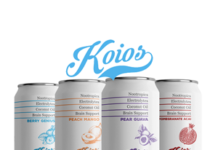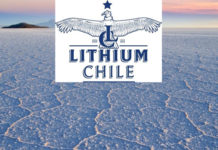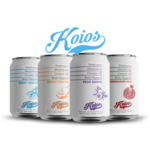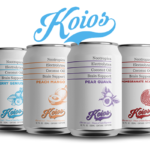When some of the biggest names in the biotechnology space all turn their attention towards one company at once, and especially when that company is a relatively under the radar stock, it’s worth taking notice. This is exactly what’s happened with VBI Vaccines, Inc. – Ordinary Shares (NASDAQ:VBIV).
A list of the company’s backers reads like a who’s who of the space:
- Philip Frost. Billionaire investor with a focus on healthcare. Frost is the current CEO and Chairman of Opko Health Inc. (NASDAQ:OPK), having made his fortune through the founding and subsequent $7 billion sale of IVAX to Teva Pharmaceutical Industries Ltd (ADR) (NYSE:TEVA).
- Steven Gillis. Again, a healthcare billionaire that founded and sold his own multi billion dollar biotech company, Corixa Corp, this time to GlaxoSmithKline plc (ADR) (NYSE:GSK). He now serves as Managing Director for renowned healthcare fund, Arch Venture Partners.
- Perceptive Advisors. The best performing biotech hedge fund, below $1 billion in assets, in 2015, and one of the top five performing hedge funds across all industries, again in 2015. Perceptive just closed a $23.6 million financing with VBI, increasing its stake from 7.8% to 15.8%. Additionally, Sam Chawla, a Portfolio Manager at Perceptive, sits on VBI’s Board of Directors.
Why, then, are these big names looking at VBI? Dig a little into the operations that underpin the company’s current valuation, and it’s easy to see why they believe there’s a return to be made on an exposure.
By way of introduction, VBI formed out of a merger between two then-separate entities, VBI Vaccines and SciVac Therapeutics, earlier this year. The resulting entity changed its name to VBI Vaccines, and commenced trading under its current NASDAQ VBIV ticker. SciVac brought to the table a hepatitis B vaccine called SciBVac, while VBI brought with it a suite of technologies designed to create next generation vaccines.
Since the merger closed, the combined entity has been working on two primary fronts.
The first, the regulatory approval of SciBVac in the US. The vaccine is currently approved in 15 countries, and has a wealth of safety and efficacy data to support the review process in the US already on file. VBI is aiming to initiate a pivotal trial for SciBVac during the first half of 2017. Assuming it can replicate the wealth of already available data in said trial (and there’s no reason to think it can’t, given the scope of support already in place), there should be no problem in getting an FDA green light for commercialization in the US.
The second, the development of vaccines in various indications, using the above mentioned next generation vaccine technology. The technology creates what the company refers to as enveloped virus-like particle, or eVLP, vaccines. The closer a vaccine resembles the virus against which it is trying to elicit immunity, the more effective it becomes. This is why legacy vaccines used a piece of the virus as their core component. More recently, scientists have been able to develop vaccines that mimic the virus, but to a limited degree. The eVLP vaccines that VBI is working on build on this mimicry further, expressing two or more viral antigens to for the immune system of the patient to recognize. The more antigens, the higher the similarity, and the higher the resulting immunogenicity.
VBI has applied this concept to the cytomegalovirus (CMV), which affects more than half of adults by the time they reach age 40 and can result in serious neurological and physical issues in babies. Demand for a CMV vaccine is expected to exceed 7.6 million doses by 2030. With pricing similar to HPV at $140 per dose, the market potential for a prophylactic CMV vaccine would exceed $1 billion annually.
The company completed enrollment in a phase I study investigating its CMV vaccine in September 2016, and expects to report interim during the first of 2017.
The company is also applying the technology to brain cancer, specifically glioblastoma multiforme (GBM). It turns out that GBM cells are susceptible to CMV infection, with a reported 90% expressing CMV antigens. This allows VBI, therefore, to use its eVLP technology to create an immunotherapy candidate, a candidate it is calling VBI-1901, which builds on its CMV vaccine, adapting it to induce an immune response to a patient’s GBM cells. The company completed a pre-IND meeting with the FDA back in October, and expects to file an IND to initiate a Phase I/IIa clinical trial in patients with GBM during the first half of next year.
It’s hard to see how VBI gain strength throughout 2017. The above two eVLP target indications bring with them multiple potential catalysts, as trials kick off and data hits press. The SciBVac registration trial should drive value, and if successful, will improve the company’s immediate sales potential (i.e., outside of its eVLP program) near term. The financing mentioned in the introduction, the combined $10.6 million equity financing and the $13 million in secured debt, expands the company’s runway into 2018, and removes the requirement for any equity issue alongside the 2017 catalysts.
The takeaway here is that this company has a host of big name backers, a proprietary technology that can produce revolutionary vaccines and a product already approved multi-nationally, and poised for approval in the US. It’s got cash on hand to see it through a number of major catalysts, and negligible debt on its balance sheet ($1.4 million long term as of September 30, 2016). Despite this, it’s valued at just $110 million based on current price, and is down more than 30% on its 2016 highs.
It can’t be long before VBI realigns with its potential, and a position taken now is exposed to this realignment.












